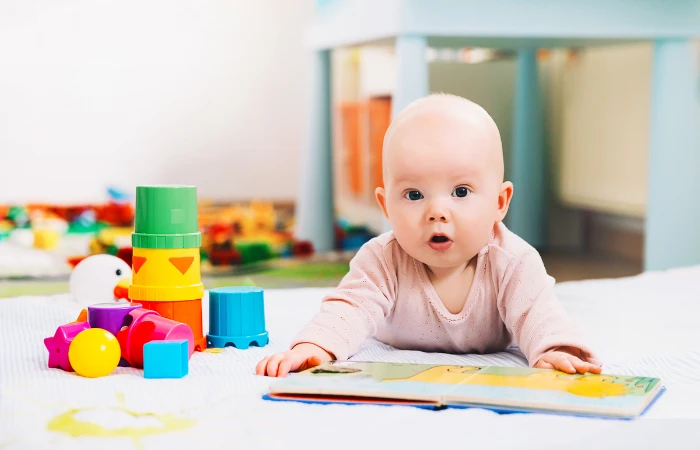Recent studies reveal a concerning presence of harmful PFAS chemicals in numerous children’s products, even those boasting green certifications. These undisclosed substances are particularly prevalent in items advertised as water- or stain-resistant, such as clothing, bedding, and furniture.
The challenge for consumers seeking toxin-free options is increasing. Researchers have discovered that many children’s goods, despite having eco-friendly labels, actually contain damaging PFAS chemicals not mentioned on their labels. This issue underscores the widespread nature of PFAS and the obstacles faced by consumers in avoiding harmful chemicals in daily life. It also highlights the need for superior eco-labeling initiatives and transparency of funding.
PFAS, linked to various health issues like cancer, thyroid disorders, high cholesterol, and respiratory problems, are also known to hinder immune system functions. This could reduce the effectiveness of vaccines in children and weaken their ability to combat infections.
PFAS, or Per- and polyfluoroalkyl substances, are synthetic chemicals with multiple fluorine atoms attached to an alkyl chain. These persistent organic pollutants, also known as “forever chemicals,” have been found in humans and wildlife, raising significant health concerns.
Dr. Laurel Schaider, a senior scientist at Silent Spring Institute, emphasizes the vulnerability of children to chemical exposures due to their developing bodies. Parents naturally aim to avoid products with potentially harmful ingredients.
“Children’s bodies are still developing and are especially sensitive to chemical exposures,” says Dr. Schaider. “It makes sense that parents would want to steer clear of products that contain ingredients that could impact their children’s health now and in the future.”

In response to this concern, many consumers opt for products labeled as “green” or “nontoxic.” Unfortunately, that choice doesn’t help as much as the labels claim!
The study, led by Schaider and her team, aimed to assess the effectiveness of these labels in avoiding PFAS. The Silent Spring team’s research, published in Environmental Science & Technology, involved testing 93 children and adolescent products, including bedding, furnishings, and clothing, especially those labeled as stain-resistant, water-resistant, or “green/nontoxic.”
Initially, the team used a rapid screening method to detect fluorine, indicative of PFAS presence. A significant number of products, including a school uniform shirt, demonstrated detectable fluorine levels.
Further tests on a subset of these items for 36 PFAS chemicals revealed their presence solely in items marketed as water- or stain-resistant, regardless of their “green” or “nontoxic” labels.
PFAS were commonly found in upholstered furniture, clothing, and pillow protectors, with pillow protectors and clothing showing higher PFAS levels. Surprisingly, PFOA, a phased-out legacy PFAS, was detected in various products, including those labeled as “green,” most of which originated from China.
Kathryn Rodgers, a co-author and doctoral student at Boston University School of Public Health, stresses the risk posed by these chemicals in everyday children’s products, arguing against their inclusion given their toxicity and non-essential nature.
“These are products that children come into close contact with every day and over a long period of time. Given the toxicity of PFAS and the fact that the chemicals don’t serve a critical function, they should not be allowed in products,” stated Rodgers.

PFAS, a group of over 9000 chemicals, are added to a wide array of consumer products for their non-stick, waterproof, and stain-resistant properties. These include everyday items like cookware, food packaging, cosmetics, and even dental floss.
The study highlights the need for green certifiers to consider PFAS in their criteria and conduct comprehensive reviews of certified products. These certifications, provided by third-party organizations, assure consumers of the absence of certain harmful chemicals, but their standards and chemical coverage vary.
Mike Schade, director of Toxic-Free Future’s Mind the Store program, calls for retailer responsibility in halting the spread of these toxic chemicals.

Toxic-Free Future’s recent report in January found widespread PFAS in water- and stain-resistant textiles sold at major retailers.
More To Discover
- Why Bioplastics Aren’t the Eco-Solution We Hoped For (Australia Is The Perfect Example)
- A Common Laundry Detergent Enzyme Can Recycle Single-Use Plastics In 24-Hours, Researchers Discover
- Scientists Unlock Circular Recycling for One Of The Most Common Plastics
- PLANETCARE 2.0: An Eco-Conscious Step Towards Cleaner Oceans and Sustainable Laundry Practices
Several states are taking legislative action against PFAS. California, Washington, Maine, and Massachusetts are introducing or enacting laws to phase out or ban PFAS in various products, ranging from children’s goods to household items and cosmetics, highlighting a growing movement towards PFAS-free products.
Current Legislation or Policies To Help Tackle This Problem
- California passed legislation banning the use of PFAS in certain infant and children’s products and is now considering a bill to ban PFAS in textiles.
- Washington State passed a bill designed to phase out PFAS in a range of products including apparel, cosmetics, and firefighter gear by 2025.
- Maine just passed a law that prohibits the sale of all products with intentionally added PFAS, except products where the use of PFAS is unavoidable, starting in 2030.
- Massachusetts introduced a bill that, once passed, would prohibit the use of PFAS in common household products, including carpeting, cookware, and cosmetics.



















